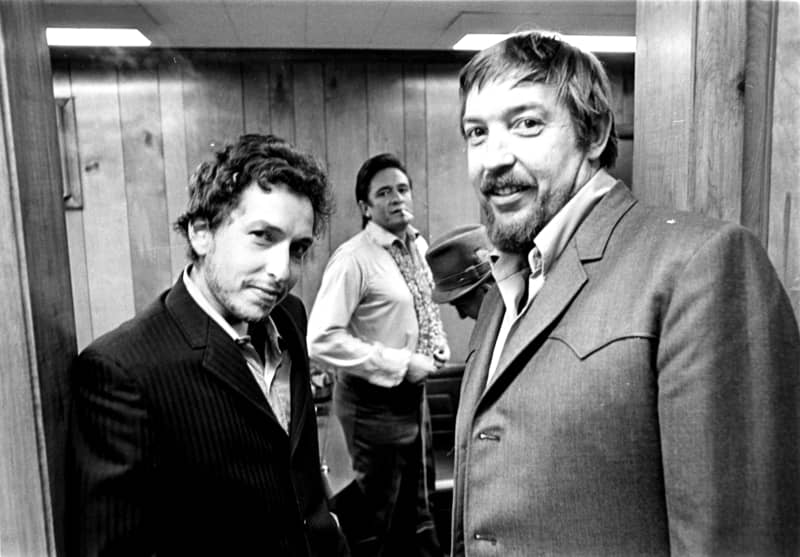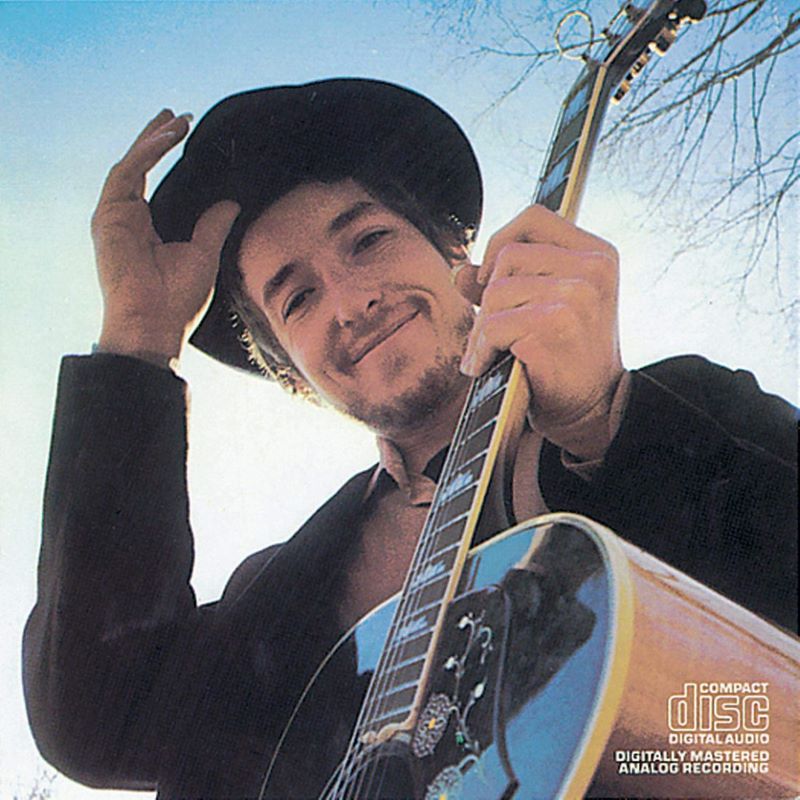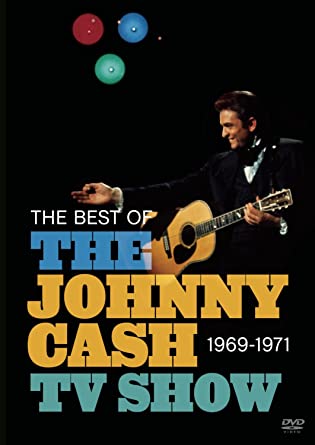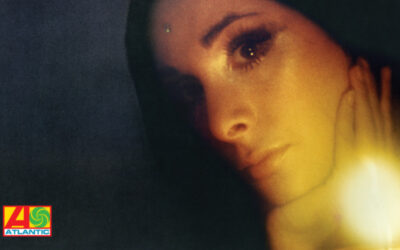A conversation with Bob Johnston
June 17th 2009, 40th Anniversary of Bob Dylan’s Epochal Nashville Skyline album
“With ‘Nashville Skyline’ Dylan continued to box himself into the arena of the Beatles and, in particular, the Rolling Stones and show us all not only how good he was at the same game, but how to change and improve it.”
–Andrew Loog Oldham, record producer, author, and DJ, Little Steven’s Underground Garage broadcast on the Sirius/XM Satellite Radio network.
June 17, 2009 marked the 40th anniversary of the original Columbia Records release of Bob Dylan’s delightful Nashville Skyline album produced by Bob Johnston.
Bob Johnston’s breathtaking audio resume
Record producer Johnston’s breathtaking audio resume includes Johnny Cash’s Folsom Prison and San Quentin live LP’s, Simon & Garfunkel’s Bookends, several Willie Nelson records and the first few classic albums of Leonard Cohen’s studio activities. Johnston also wrote the music to the Cohen lyric Come Spend The Morning, recorded by Lee Hazelwood. His credits include productions with Patti Page, Moby Grape, Byrds, Joe Ely, Mike Scott in addition to the Bob Dylan studio endeavors, Highway 61 Revisited, Blonde On Blonde, John Wesley Harding, Nashville Skyline, Self Portrait, and New Morning.

Dylan Cash Bob Johnston Photo by Al Clayton Sony Music Archives.
Bob Johnston was born in 1932 in Hillsboro, Texas. Johnston held a staff songwriting position at Elvis Presley’s Hill & Range Music, and then talent scouting for Kapp and arranging for Dot Record labels, before joining Columbia Records in 1965.
Now based in Austin, Texas, Johnston recalls his landmark production endeavors and collaboration with Bob Dylan on Highway 61, Blonde On Blonde, John Wesley Harding, and Nashville Skyline as well as his recording studio and television work with Johnny Cash.
1965: Johnston meets Dylan
Johnston was initially introduced to Dylan in 1965 when he was called in to replace producer Tom Wilson to complete Dylan’s Highway 61 Revisited album in New York City. “I was working with Dylan in New York and I flew in Charlie McCoy from Nashville, introduced him to Dylan, and the first thing we cut was a version of Desolation Row, with Dylan on acoustic, Charlie on electric, and Harvey Brooks on bass.
“I was standing by the soundboard, and I said to Dylan, ‘Listen man, you ought to come to Nashville sometime,’” Johnston remembers.
“‘I got a fix up down there with no clocks and the musicians are fuckin’ great.’
“‘Hmmm.’
“He’d never answer you, just go ‘hmmm’ like Jack Benny. So I finished ‘Highway 61’ and then Dylan called me about six months later and he said, ‘an, I got a bunch of songs. What do you think about going to Nashville?’
“‘That’s what I was talkin’ about!’
“In 1966 we went down there for Blonde On Blonde and the first thing was beautiful. He said, ‘Well, I got an idea…’. He stayed out in the studio 10 or 12 hours. He never left it. He’d eat candy bars and drink milkshakes and all, and nobody does that much,” Johnston ponders.
“I sent the musicians away and told them to do anything you want to and be in phone contact. Don’t go home… you can be in the studio down here if you need some beds or something.
“About 2:00 in the morning Dylan came out of the studio and said, ‘I got a song I think. Is anybody left here?’ First thing we did was Sad Eyed Lady Of The Lowlands.
“I told everybody if they quit playing they were gone. It didn’t matter because I could overdub anybody but Dylan. But if you quit with him you’ll never hear that song again,” Johnston relates.
“And he’d go to the count and play something else. So they came out and got all around. And Dylan said, ‘it goes like this. C, D. G.’ And then he went over the thing and they said, ‘Man, we haven’t heard this thing.’
“‘I said that’s right. The first one who misses just walk out of the room. Don’t stop.’
“And he went out there and started counting off, and that’s another thing, too, nobody ever counted off for Bob Dylan. Every other artist in the world that I’ve been around has a drummer or somebody else counting. He went 1, 2, with that foot and it was gone. When we got through he said ‘let’s hear it back.’ And he came in the studio and played back Sad Eyed Lady Of The Lowlands. 15, 16 minutes. And that was the first thing that we did for Blonde On Blonde.
“And from then on it just went up and up and couldn’t go up any higher and higher. I think that’s one of the best tracks ever cut along with Desolation Row.
“Dylan and I were notorious for using first takes,” Johnston reveals. “I don’t see any sense in doing it over and over. They knew what I wanted them to play not what I gave them. That’s why they were there.
“When I started with Dylan he said, ‘my voice is too loud.’ Good enough. So I turned it down. Then I’d turn it up. ‘Man, I can’t hear myself,’ and had that voice out there. Finally, we got to the place where he said, ‘I can’t hear myself.’ ‘Cause I’d brought it so low. So I told him I’d take care of it and never asked him about it anymore and turned everything up and had that voice out there.”
1967: Dylan Had a Different Vocal Sound
Fast-forward to 1967, after the notorious Dylan motorcycle accident in July 1966 that among other things, sidelined Dylan (at least in the public eye) for a better part of a year.
Bob Johnston met up with Dylan again at a Ramada Inn in Nashville, Tennessee before working on John Wesley Harding together.
“He played me some songs and asked, ‘what do you think about a bass, drum, and guitar?’
“‘I think it would be fuckin’ brilliant if you had a steel guitar.’
“‘You know anybody?’
“‘Yea. Pete Drake.’
“He was workin’ with Chet (Atkins), so I got somebody to take his place and brought him over,” Johnston ruminates.
“Pete said, ‘Can I play some rock ‘n’ roll?’
“And I told him, ‘That’s what you’re here for.’ Charlie McCoy played a lot of instruments on that album. He played 4, 5, or 20 instruments on every record.
“When I produced Blonde On Blonde, John Wesley Harding, and Nashville Skyline they all knew what I wanted. (Drummer) Kenny Buttrey was a genius by being as good as he was and by me fuckin’ with everybody,” underscores Johnston.
“I used to fuck around to Kenny and I’d say, ‘Your God damn drum is dragging, and you’re bringing everybody else down.’
“And he’d get pissed off. “My drum isn’t dragging!’ He’d be mumbling to himself and everybody else would be laughing,” Johnston chuckles. “Then he’d say ‘can I play anything else?’
“I would place glass around Dylan for recording,” remembers Johnston. “He had a different vocal sound. I didn’t make his different vocal sound. He always had different sounds on. I never wanted to be (Phil) Spector… and while the rest of the world was doing an album as big as Blonde On Blonde, which everybody was, the more musicians they could get, the better it was. We went in with four people…in the middle of a psychedelic world!”
I was a Dylan freak and I knew he was changing the world
On December 27, 1967, Columbia Records released the Bob Johnston-produced Bob Dylan John Wesley Harding long player. In January of 1968, it was the most tracked LP on countless FM radio stations in America and all over the world.
Two tracks on JWH were a preview of the upcoming song and sound route for Nashville Skyline: The Sun Records-inspired Down Along The Cove and I’ll Be Your Baby Tonight.
At the start of To Be Alone With You on Nashville Skyline, Bob Dylan famously asks “Is it rolling, Bob?” referring to producer Johnston.
“Nashville Skyline. That’s fuckin’ great. Like sessions with Cash, I found the players, ‘if you quit you are outta here.’ They knew what I wanted them to play not what I gave them. That’s why they were there.
“I’ll tell you something else I did with Dylan, and recording Dylan and Cash,” Bob Johnston discloses. “Everybody else (at the time) was using one microphone. Which means you have to sacrifice something. If you’re gonna have a band, you can’t have the band playin’ full tilt. If you’ve got him in the middle you can’t understand everything with different people (engineers) in there raising the guitar up, raising the drum up, and shit like that. What I always did was that I had three microphones because he was always jerking his head around, and I put the microphone on the left, center and right and it didn’t matter where in the fuckin’ room he went.
“And then,” he continues,” I’d mix and start on the left and go all the way over on the right. So I’d usually have the piano on the outside left, without any echo. And then I’d put the echo on the right side. And then I’d have one of the guitars on the right and put the echo on the left…and then I’d match it all alone and brought up everything even, so they could fight it out. And then that’s the way the band was. They didn’t have to raise this and lower this, and 15 people sitting around doin’ all that shit. The band was there and he was full tilt. Then you could go any place in the room and understand him. And I never heard another word from him about anything.
“What I did was put a bunch of microphones all over the room and up on the ceiling. I would use echo when everything got through and I could do that as much as I wanted.
“I wanted it to sound better than anything else sounded ever, and I wanted it to be where everybody could hear it.
“And I don’t know what Dylan would have been if he stayed in New York with those people, and been mixed like that. And I know he would have never done that shit like he did in Nashville,” boasts Johnston.
“I always had 4 or 8 speakers all over the room and I had ‘em going. The louder I played it the better it sounded to me. This is the way I really did it. As a songwriter, I wrote songs, too.
“Dylan changed the world. Every song he did I loved. I was a Dylan freak and I knew he was changing the world. I knew he was changing the society as we knew it. And I knew Paul (Simon) was too,” Johnston concludes.
“I had Cash in the Columbia Music Row studio and thought it would be nice to get Dylan in there, too and I didn’t say anything to them.
“Cash was in the studio and Dylan came in. ‘What are you doing here?’
“‘Gonna record.’
“‘Well, I’m recording too.’
“So, they invited me to dinner, but I said ‘no thanks.’ And when they returned I had a ‘café’ set up outside with microphones and their guitars, and they came in, looked at the lights, sorta smiled at each other. June (Carter Cash) was there. We did like 18 tracks.”
Johnny Cash and Bob Dylan were tight
Those sessions yielded the duet Girl From The North Country heard on Nashville Skyline. Johnny Cash subsequently penned the poetic liner notes to the album’s back cover album sleeve. Graham Nash mentioned, in the MOJO 1969 issue published in 2009, that Girl From The North Country was his favorite song in ’69.
Johnny Cash and Bob Dylan were tight. In 1975 I interviewed Cash in Anaheim, California for the now-defunct Melody Maker.
Johnny Cash on Bob Dylan:
“I became aware of Bob Dylan when the Freewheelin album came out in 1963. I thought he was one of the best country singers I had ever heard. I always felt a lot in common with him. I knew a lot about him before we had ever met. I knew he had heard and listened to country music. I heard a lot of inflections from country artists I was familiar with.
“I was in Las Vegas in ’63 and ’64 and wrote him a letter telling him how much I liked his work. I got a letter back and we developed a correspondence.”
A year later Cash met his label stable-mate. “We finally met at Newport in 1965. It was like we were two old friends. There was none of this standing back, trying to figure each other out.
“He’s unique and original. I keep lookin’ around as we pass the middle of the 70s and I don’t see anybody come close to Bob Dylan. I respect him. Dylan is a few years younger than I am but we share a bond that hasn’t diminished. I get inspiration from him,” Johnny told me at the time. Cash and I share a February 26th day of birth.
Johnny Cash At Folsom Prison
It was in June 1967 when Columbia Records staff producer Bob Johnston replaced Don Law at the Nashville based company producing Cash.
Johnston’s studio acumen and teaming with Cash in the 1968 and ’69 time period resulted in the bold and riveting albums Johnny Cash at San Quentin and Johnny Cash At Folsom Prison.
“When I took over Cash, he didn’t hit the country charts,” Johnston reinforces. “Like I said on the back of the Folsom Prison album liner notes, no one for 8 years would let him go there to record live until he got me, and I said, ‘let’s do it’ I picked up the phone and called Folsom and San Quentin,” he volunteers.
“The reason the Folsom album was made first is because the Folsom warden answered first, simple as that. I got the warden, Duffy, and I handed Johnny the telephone and left.
“When we did Folsom there was a guy who was going to introduce Johnny on stage in front of the cons and everyone standing up. I said ‘Bullshit!’ And told Johnny to go walk out there now! They are not even sitting down good. Walk out there and jerk your head around and say, ‘Hello. I’m Johnny Cash’ and it don’t matter what the fuck you record.
“And he said ‘Get outta my God damn way!’ And he didn’t usually didn’t cuss. But he pushed people away went out there and the God damn place became unglued!”
The Johnny Cash Television Show series ran on ABC-TV from 1969-1971.
“I helped Cash get the television show,” Johnston proclaims.
“Cash called me and said, ‘Listen. I got one thing. Will you get Dylan? If I had Dylan on my show it would be a big success. And if I don’t it will be a fuckin’ failure.’ And he said, ‘Will you get him?’
“And I said, ‘No.’
“‘You won’t?’
“‘No.’
“‘You won’t.’ ‘Why not?’
“‘But I’ll ask him. But I can’t get anybody. I don’t want to get anybody.’ That’s the kind of truth I had with all of those people.
“He said, ‘will you ask?’
“‘Yea!’
“So, I was in Ft. Worth Texas, which was my home town, and called Dylan. And, I said, ‘Man, Cash just called me and he’s got a TV show that we’ve been working on and if he’s got you it will be a success and if he doesn’t it will be a fuckin’ failure. That’s what he told me.’
“And, Dylan said, ‘well, man, I’d like to…’
“And I thought that’s the end of that, he’s so busy. And Dylan said, ‘I’ve got nothing to wear.’
“I said ‘I’m in Ft. Worth Texas, let me get you a cowboy suit.’
“‘Yea!’
“‘What size do you wear and what color?’
“‘I don’t know.’
“I said, ‘don’t fuckin’ worry about it I’ll take care of it.’ I got him a pin-striped white one that was too long came over his wrist and a white one that was too short. That’s how it started.”
On the first Cash TV episode, Johnny and Bob performed 3 songs from Nashville Skyline
“The sound jumped off the screen on the Cash TV series because I never told anybody nothing that wasn’t the truth. Everything I said and did was for the artist,” explains Bob Johnston.
“I never gave a fuck what the company thought. One of my goals was to make it sound like they were in the room with me. But the thing I wanted was the truth. And that’s what Cash got. And that’s what Dylan got. At the Ryman Auditorium tapings for the Cash show, I was always real nice to everybody and had two engineers from Columbia (Records) in Nashville that I told Cash we had to have with them so they didn’t fuck up for us. Johnny didn’t fight for anything. ‘This is the way it’s gonna be’. I had those people take care of everything and anything that was bad I would move it, and anything that wasn’t I’d re-record it on the kind of microphone I’d want and put it on there anyway,” he chortles.
“Carl Perkins is not given enough credit. He wrote Daddy Sang Bass that had the Statler Brothers and Carter Family on background vocals. But Cash got him on that TV show and Carl was part of A Boy Named Sue.”
In September 2007, a 2 disc DVD set of The Best Of The Johnny Cash TV Show the 1969-1971 ABC-TV series was released by CMV/Columbia Legacy, a division of Sony BMG Entertainment. 58 episodes were originally broadcast.
Kris Kristofferson hosts the DVD collection and Cash sings Kristofferson’s tune Sunday Mornin’ Comin’ Down. Footage of Dylan’s I Threw It All Away and a Dylan/Cash duet on Girl From The North Country are included on the DVD retail item.
Executive Producers on the 2007 DVD are Lou Robin, Cash’s longtime manager, and John Carter Cash, his son with June Carter Cash.
Johnny and June’s offspring told an amusing story describing Bob Dylan’s initial encounter with his dad for the first time in the December 2, 2005 issue of USA Weekend:
“Dad would chuckle when he’d tell me how Bob Dylan acted like a silly kid when they first met. He burst into Dad’s hotel room and began jumping on the bed, shouting, ‘I met Johnny Cash! I finally met Johnny Cash!’”
—
Originally Posted 2009







